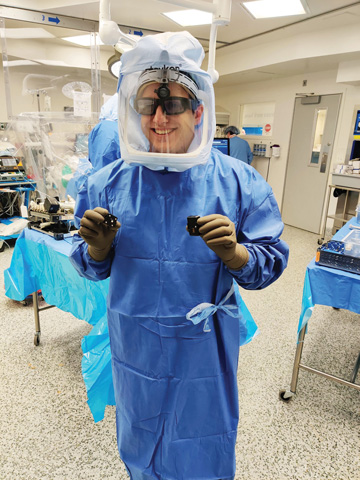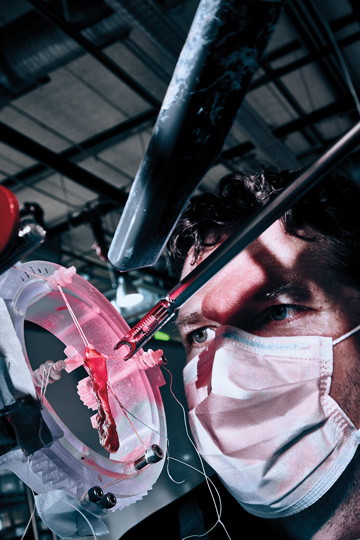Imagine walking into the operating room of tomorrow and feeling out of place in unfamiliar surroundings. “ORs are going to look very different in the future,” says Michael P. Ast, MD, vice chair of the HSS Innovation Institute and chief medical innovation officer at Hospital for Special Surgery in New York City. “Nothing will be on the ground. Data and images will be displayed on floating screens or digitally projected into augmented reality (AR) glasses. Things like patient information, the consent form and the timeout checklist could be visible to everybody in the room at the same time.”
Dr. Ast says the increase of higher acuity outpatient surgery is combining with the emergence of advanced technology such as tracking and automation systems, computer-assisted surgery, robotics and AR. “I think the platforms will combine to automate the entire surgical experience,” he says. “Eventually, every surgeon could wear some type of AR headset, and when using robotic or computer-assistive technology, they’ll see everything right in front of them in the surgical field, and the information will be projected for everyone else in the room to see.”
The cables and wires that connect and power monitors and anesthesia equipment will be gone. “Everything will be wireless, making it simpler, easier and safer to use,” says Dr. Ast.
He believes patients will be tagged with wireless technology that identifies them throughout the perioperative process and connects to their relevant clinical information. “This will make patient care easier and more personalized,” says Dr. Ast. “The technology will perform its own safety checks and alert the surgical team if the wrong patient is in the wrong OR or about to undergo the wrong surgery. The more we implement technology, the safer surgery will become.”
.svg?sfvrsn=be606e78_3)


.svg?sfvrsn=56b2f850_5)